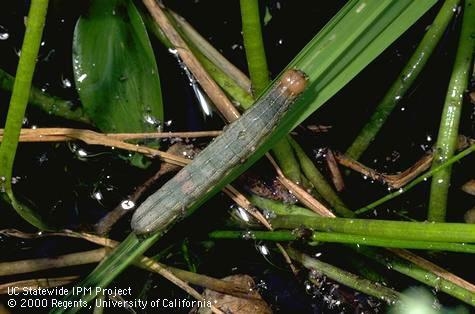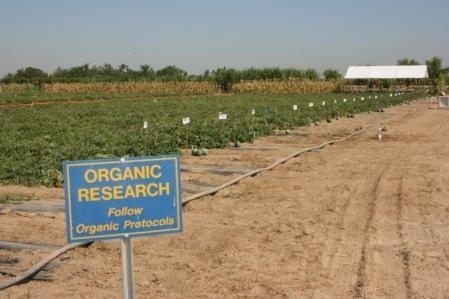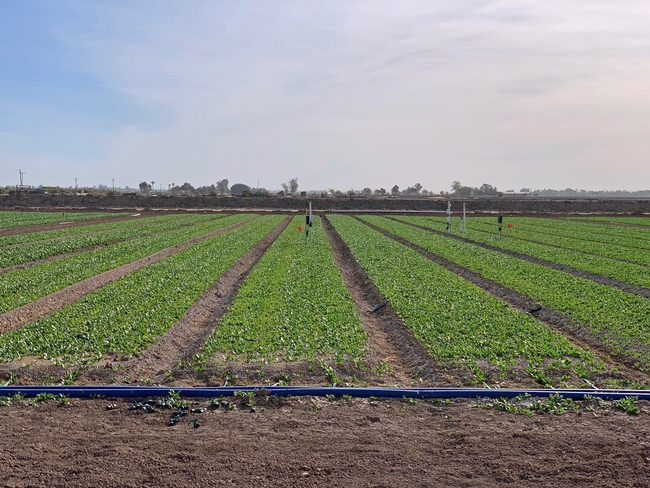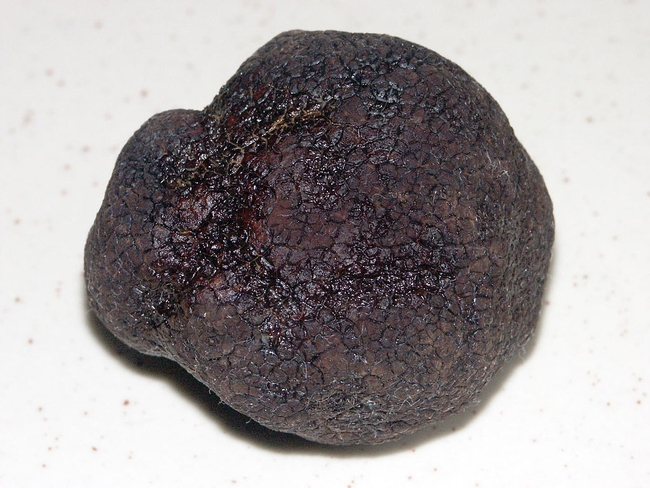Posts Tagged: agriculture
Asian citrus psyllid infected with huanglongbing disease found in Riverside citrus grove
The recent identification of an Asian citrus psyllid infected with huanglongbing disease in a Riverside commercial citrus grove isn't surprising, said UC Cooperative Extension specialist Monique Rivera in an interview with Brian German of AgNetWest.
"We've had positive trees removed here in Riverside and we're not that far from LA," Rivera said. "Eventually those two quarantine circles are likely to merge here in Southern California."
Rivera said an HLB-infected ACP hasn't been found in Riverside commercial citrus before because CDFA is mainly responsible for sampling ACP in backyard trees. "They aren't looking directly or systematically at commercial groves," she said.
There are resources available for growers to test ACPs found in their citrus orchards. Growers can request PCR testing of ACP or plant samples from an accredited lab, such as the Citrus Pest Detection Program (CPDP) which is operated by the Central California Tristeza Eradication Agency. CDFA will also collect samples for analysis at no cost to the grower.
UCCE helps farmers protect rice crops from armyworm
Rice farmers are encouraged to monitor vigilantly for a rise in yield-reducing armyworms, reported Jake Abbott in the Appeal-Democrat.
UC Cooperative Extension rice advisor Luis Espino said the most recent numbers were low but are expected to climb in the next few weeks. The pest can quickly devour rice foliage down to the water level. The crop may recover, but armyworm presence can lead to yield reduction.
“I've heard numerous stories where growers were used to some defoliation and would go on vacation, and after the weekend they'd come back and see full defoliation," Espino said.
Espino and his team set traps at 15 locations across the valley to monitor pest populations weekly. The pheromone traps are small buckets that attract male moths. They take the information collected from the traps and notify farmers on whether or not they should begin examining their own fields for the presence of armyworms.
“We usually start to see numbers increase around mid-June and peak in late June or early July,” Espino said. “Right now, numbers are very low but they will come up. Over the years, we've learned that once we see the moth population peak, we see a peak of the worm population a week later. Once we start seeing those go up, we begin letting growers know to check their fields.”
UC ANR's new organic institute is swinging into action
The newly appointed Presidential Director for the Clif Bar Endowed Organic Agriculture Institute, Houston Wilson, has already initiated a needs assessment of organic agriculture in California, reported Lee Allen in Western Farm Press. Wilson is using surveys and focus groups to determine production needs within target commodities.
“Our mission will be to develop research and extension for organic production of things like tree fruits, tree nuts and raisins, commodities representing a significant portion of the entire Central Valley, but with very different cropping systems," Wilson said.
The diversity of California agriculture is represented in scale and systems - from orchards to vineyards to row crops and rice production.
"We're working on a cost-benefit analysis for commodities across the state to determine where gains can be had by developing better organic practices," Wilson said. "The argument about whether or not organic production can produce more yield is a hot topic. There are arguments that say organic can't yield as much as conventional and that may be because not that much has been invested in the organic effort compared to conventional agriculture. Metaphorically, it's like comparing a veteran player with a new kid on the team."
Price premiums for certified organic produce entice growers to convert to organic.
"Our job is to work with them, to identify and develop industry practices that make (organic production) move even more alluring," Wilson said.
Drip irrigation continues to yield benefits
Considered among the most important agricultural innovations in the world, drip irrigation has been researched for decades. UC Cooperative Extension weed management advisor Aliasghar Montazar has taken a close look at its application in organic spinach cultivation, reported Matthew Grassi in Growing Produce.
Not only does drip irrigation use less water than irrigation with sprinklers, the slow emission of water near plant roots also diminishes the crops' susceptibility to disease. Growers believe that ongoing issues with downy mildew is at least partially caused by moisture that sprinklers leave in the plant canopy.
“Being certified organic, there is really nothing they can use as fungicide; so it is a big problem,” Montazar said. “So, we said ‘Let's try drip (irrigation) in spinach.'”
Early results are promising. Montazar has analyzed enough field data from the plots to directly correlate a four- to five-times reduction in downy mildew disease in plots grown with drip irrigation compared to sprinkler-irrigated plots.
“The other thing to note is there is a nice savings on energy as well,” Montazar said. “Another grower reported he saved $200 an acre on energy savings from getting off the sprinklers. Because with drip, there is less pressure needed, so it consumes less energy (to pump water).”
UCCE scientist is researching Perigord truffle cultivation in Placerville
UC Cooperative Extension advisor Scott Oneto and retired insurance executive Staci O'Toole are researching conditions in a Placerville hazelnut orchard that best support the production of highly prized Perigord truffles, reported Becky Grunewald in the Sacramento Bee.
“Whether this will be the next big commodity in California? I would love to say yes, but that goes with a lot of hesitancy and uncertainty," Oneto said. "There's a ton of things we need to figure out to make this industry successful.”
O'Toole had asked Oneto for assistance.
“When I have a farmer or rancher who is presented with problems, whether it be a new pest, weed, pathogen, or the effects of climate change, we help them solve those problems so they can continue to be successful in agriculture,” Oneto said.
During a sabbatical leave, Oneto researched scientific literature about truffle cultivation. Last spring, he and O'Toole set out an experiment in four plots of her hazelnut orchard to compare different growing conditions, with varying levels of moisture, shade, pH and soil amendment.
The hazelnut trees were planted, pre-inoculated with truffle mycelium, over a decade ago by the former ranch owner. The trees are all the same age, same variety, and same condition, making the location ideal for scientific investigation.
O'Toole is keeping close track of truffle production in the orchard, the article said. In time, Oneto hopes to publish the results of their experiment in a peer-reviewed journal to help other would-be truffle growers.





